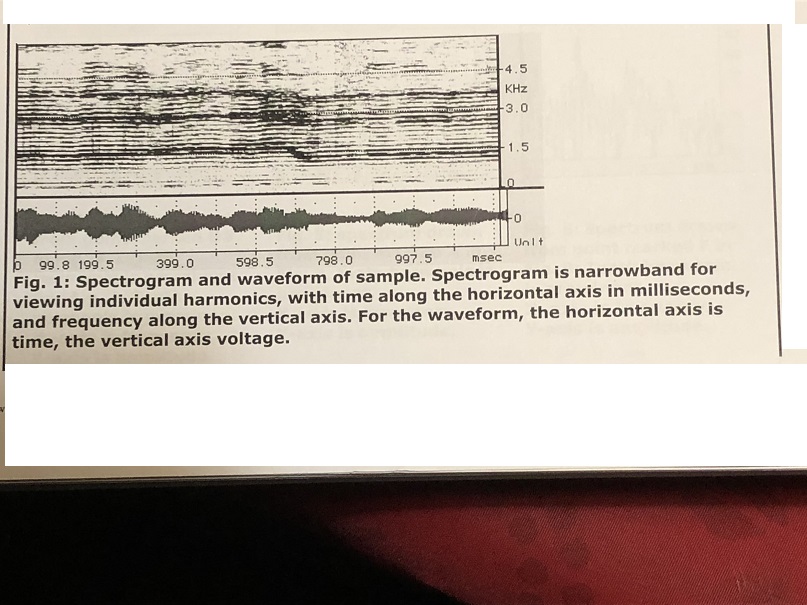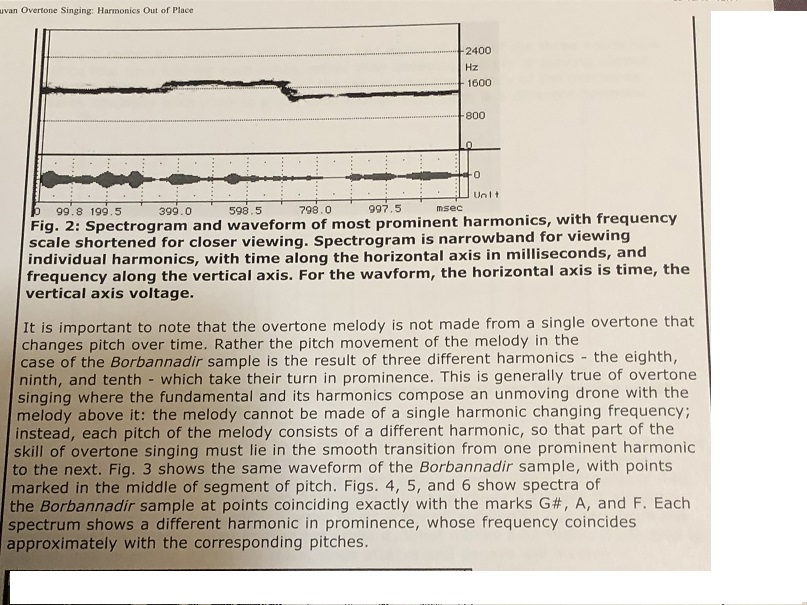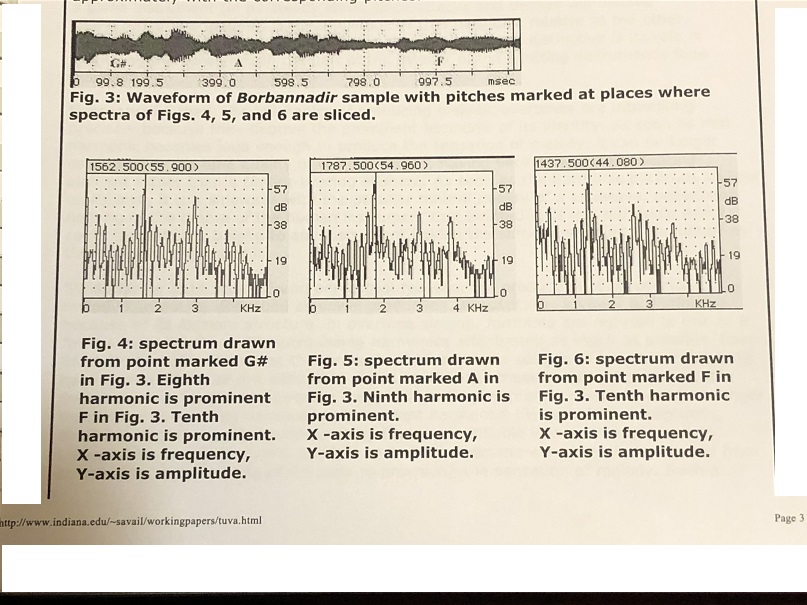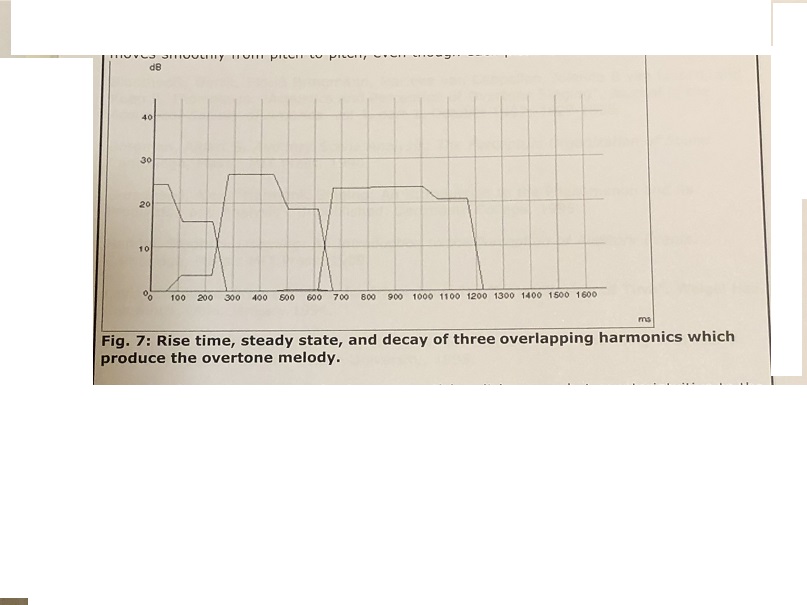Hilary FINCHUM: Tuvan Overtone Singing: Harmonics Out of Place
Tuvan Overtone Singing: Harmonics Out of Place
Hilary Finchum

home | staff/hours/map | publications | working papers
The region known as Tuva is contained within the southern portion of Siberia, lying in the exact geographical center of Asia. The traditional territory stretches from the Altai Mountains to the headwaters of the Yenisei, northwest of the mountain border between Russia and Mongolia. Surrounded by mountain ranges on the northeast, north, northwest, and western boundaries, Tuva was kept in relative isolation for a very long time. Economically, these people are dependent on their flocks of sheep, reindeer, horses, yaks, and others for much of the materials that are required to live in this harsh environment‹skin and fur for clothing, meat, milk, and dung for fuel.
Proximity to nature produces at once a dependency on Tuva’s resources and an intimate relationship of respect with the wonders of the natural world. This sense of intimacy is very much reflected in xcoomei, the Tuvan form of throat or overtone singing. Overtone singing is a type of singing in which one or more upper harmonics carry the melody, while the lower harmonics, including the fundamental, sustain a steady drone beneath the melody. The result is that a single singer can sing two or more pitches simultaneously.
In the recent past, some work has been done on the analysis of xoomei, and more has been done on overtone singing generally. The focus on this research has been on the effort to discover exactly how overtone melodies are produced. Hypotheses as to the mechanics of overtone singing range from ideas as to the necessary physical stance and posture used by the singer during a performance, to the actual physical formation of the mouth cavity in producing the overtones. Several previous researchers seem to agree that the production of the harmonics in throat singing is essentially the same as the production of an ordinary vowel. Leothaud says: “nous pouvons … conclure qu’il n’existe aucune difference de nature entre la prononciation des voyelles et l’emission diphonique” (we can conclude that there exists on difference in nature whatsoever between the pronunciation of vowels and overtone singing) (1989, 34). Similarly, Bloothooft, et al., report an entire investigation of overtone singing, based on the similarity of this kind of phonation to the articulation of vowel. The most persuasive of the researchers who approach overtone singing as vowel production is Mark Van Tongeren, who actually learned to produce the sounds of xoomei from Tuvan throat singers. In his lessons with the Tuvan singer Mongush Mergen, he says that in “explaining (to) me how to sing vowels he also commented on the physical aspects of singing, and said that I should not worry about the melodies as long as I sang the vowels properly” (Zanten and Roon 304). Different vowel sounds are supposed to produce varied effects. Van Tongeren implies that vowels are more important than the actual pitch of the overtones, since once the correct vowel sounds are produced the pitches will sound. “Apparently the most important thing is to produce the same vowel and the same sound quality” (Zanten and Roon 305).
Based on the results of acoustic analysis of Xoomei conducted at SAVAIL, I would like to argue that the physical act of creating overtones may originate in vowel production, but the end product (the actual overtones themselves) are far from vowel-like. It is not the case that the production of certain vowels will result in the presence of overtones that can carry a melody. Initial evidence that the overtones used to make melody are not vowel-like can be gathered from the fact that singers appear to be able to sing either vowels or overtone melodies, but not both at the same time; in other words, if overtones were simply vowels pronounced in a certain order, then singers could sing a text consisting of words whose vowels contained the necessary overtones to make the melody. Instead it appears that when throat singers want to include a text, they cannot melodicize overtones until the text is over; the text is “ordinary”, monophonic singing, with the fundamental frequency carrying the melody of the song; overtone melodies do not occur until the text is over. When the upper overtones become prominent enough to carry a melody, they cease to function as part of a vowel, which depends on the upper harmonics to contribute toward the sensation of timbre, (or vowel quality) rather than pitch. In fact, the Tuvans have a genre of Xoomei, called xorekteer, which is not overtone singing, consisting instead of text, with the fundamental as the melodic basis. Usually sung as an introduction to a xoomei piece, the xorekteer provides the text, which the xoomei lacks while it is focused on overtone singing.
This paper presents part of the results of larger study on Xoomei. I hope to show in this paper through acoustic analysis of a single example of Xoomei, typical of the genre and of overtone singing in general, that the necessary acoustic characteristics of overtones when they are produced for melodic purposes make then useless for timbral purposes; as soon as these overtones become prominent enough to be “heard out” as separate pitches, they fail to be fused into the unitary sensation of timbre, or vowel quality. The form of xoomei analyzed for this project is called Borbannadir which means “rolling” and thus imitates either the sound of running water, or horses hooves. The sound of borbannadir is much fuller than other forms of Xoomei, and the fundamental drone tends to be a little higher – in either the bass or baritone range.
For the analysis of the style of Xoomei in question, three different computer programs were employed. Oedipe-2.0 allowed a three-dimensional view of the progress of the harmonic envelop over time, and also allowed us to view each of the prominent harmonics as a function of time. Spectro-3.0 is an important tool in providing true energy-based frequency readings of prime harmonic peaks, rather than approximating a frequency based on its location within a calibrated window. SpecDraw was invaluable in allowing the filtering of individual harmonics, so that the prominent, melody-carrying overtones could be examined in isolation from the rest of the sound.
A sample of Borbannadirb is pictured below. Fig. 1 shows the entire sample as a spectrogram with its waveform; three prominent harmonics can be seen moving in parallel. Fig. 2 shows the most prominent overtoneb filtered from the remainder of the sound; the frequency scale has also been changed for closer examination. Here we see the frequency movement of the overtone, moving from 1563 Hz to
1788 Hz to 1338 Hz, which translates approximately into the sensation of the pitches G#, A, and F.

Fig. 1: Spectrogram and waveform of sample. Spectrogram is narrowband for viewing individual harmonics, with time along the horizontal axis in milliseconds, and frequency along the vertical axis. For the waveform, the horizontal axis is time, the vertical axis voltage.

Fig. 2: Spectrogram and waveform of most prominent harmonics, with frequency scale shortened for closer viewing. Spectrogram is narrowband for viewing individual harmonics, with time along the horizontal axis in milliseconds, and frequency along the vertical axis. For the wavform, the horizontal axis is time, the vertical axis voltage.
It is important to note that the overtone melody is not made from a single overtone that changes pitch over time. Rather the pitch movement of the melody in the case of the Borbannadir sample is the result of three different harmonics – the eighth, ninth, and tenth – which take their turn in prominence. This is generally true of overtone singing where the fundamental and its harmonics compose an unmoving drone with the melody above it: the melody cannot be made of a single harmonic changing frequency; instead, each pitch of the melody consists of a different harmonic, so that part of the skill of overtone singing must lie in the smooth transition from one prominent harmonic to the next. Fig. 3 shows the same waveform of the Borbannadir sample, with points marked in the middle of segment of pitch. Figs. 4, 5, and 6 show spectra of the Borbannadir sample at points coinciding exactly with the marks G#, A, and F. Each spectrum shows a different harmonic in prominence, whose frequency coincides approximately with the corresponding pitches.

Fig. 3: Waveform of Borbannadir sample with pitches marked at places where spectra of Figs. 4, 5, and 6 are sliced.
Fig. 4: spectrum drawn from point marked G# in Fig. 3. Eighth harmonic is prominent F in Fig. 3. Tenth harmonic is prominent.
X -axis is frequency, Y-axis is amplitude. Fig. 5: spectrum drawn from point marked A in Fig. 3. Ninth harmonic is prominent.
X -axis is frequency, Y-axis is amplitude. Fig. 6: spectrum drawn from point marked F in Fig. 3. Tenth harmonic is prominent.
X -axis is frequency, Y-axis is amplitude.
Figure 7 shows the rise time, steady state, and decay of each of the three harmonics. Notice that they overlap each other, rather than decaying sharply or leaving silence between them; this is perhaps part of the reason that the melody of the overtones moves smoothly from pitch to pitch, even though each pitch is a different harmonic.
Fig. 7: Rise time, steady state, and decay of three overlapping harmonics which produce the overtone melody.

While it will come as no surprise to an acoustician, it is somewhat counterintuitive to the musician to realize that all sounds are composed of the same physical ingredients. A harmonic of 440 Hz drawn from a violin tone will sound exactly like a harmonic of 440 Hz drawn from a flute tone, or even from a vocal tone; a single harmonic is simply a sine wave of a certain frequency, a wave of air pressure arriving to our ears from the environment, no matter what instrument emits it. What makes a harmonic distinctive to a given instrument (in its steady state, since attacks and decays will involve characteristic variations), is the amplitude of that harmonic relative to the other harmonics of the instrument. Or, what makes the harmonic distinctive is its role in producing the sensation on the part of the listener of the emitting instrument’s tone quality.
Conceptually, then, the mechanics of producing melodic overtones are interesting precisely because they deprive the prominent harmonic of its identity. As soon as that harmonic becomes loud enough to produce the sensation of melody, it can no longer contribute to the tone quality of the instrument, having become a melody-bearing element rather than a timbre-bearing element. As soon as the harmonic becomes audible on its own, it is a sinewave with the peculiar timbral quality of a sinewave, possessing nothing of the timbre of the human instrument that emitted it. It is a harmonic which could theoretically belong to any instrument having the same fundamental frequency as the tone which includes it.
Similarly, for both acoustic and perceptual reasons, the production of an overtone melody can not be described as vowel production. Acoustically, a vowel is distinctive because of its formant structure. In overtone singing, formants are reduced to one or a few harmonics, often with surrounding harmonics attentuated as much as possible. Even Bloothooft et al confess that the formants of an overtone-sung tone are so narrow as to have bandwidths that are difficult to measure. Perhaps these researchers had trouble measuring the bandwidths because the formants they wanted to measure were no longer formants, having been narrowed to prominent harmonics instead. And perceptually, overtone singing usually sounds nothing like an identifiable vowel. This is primarily because, as described above, a major part of the overtone-sung tone has switched from contributing to the timbre of the tone to provoking the sensation of melody. Such a distorted “vowel” can convey little phonetic information.
Works Cited
Bloothooft, Gerrit, Eldrid Bringmann, Marieke van Cappellen, Jolanda B van Luipen, and Koen P. Thomassen. “Acoustics and Perception of Overtone Singing”. Journal of the Acoustical Society of America. vol 4, part 1. October 1992: 1827-1836.
Bregman, Albert S. Auditory Scene Analysis: The Perceptual Organization of Sound. Cambridge, Mass.: MIT Press, 1990.
Broadhead, Alex. “Harmonic Singing: An Introduction to the Phenomenon and its Production and Analysis”. Unpublished. Dartmouth College, 1995.
Handel, Stephen. Listening: An Introduction to the Perception of Auditory Events. Cambridge, Mass.: MIT Press, 1989.
Levin, Theodore. Program notes for “Huur-Huur-Tu: Throat Singers of Tuva”. Weigel Hall. Columbus, Ohio. January 1994.
Van Zanten, William and Van Roon, Marjolijn, ed. Oideion: The Performing Arts World Wide 2. Research School: Leiden University, 1995. Publié il y a 12th January 2009 par TRAN QUANG HAI

